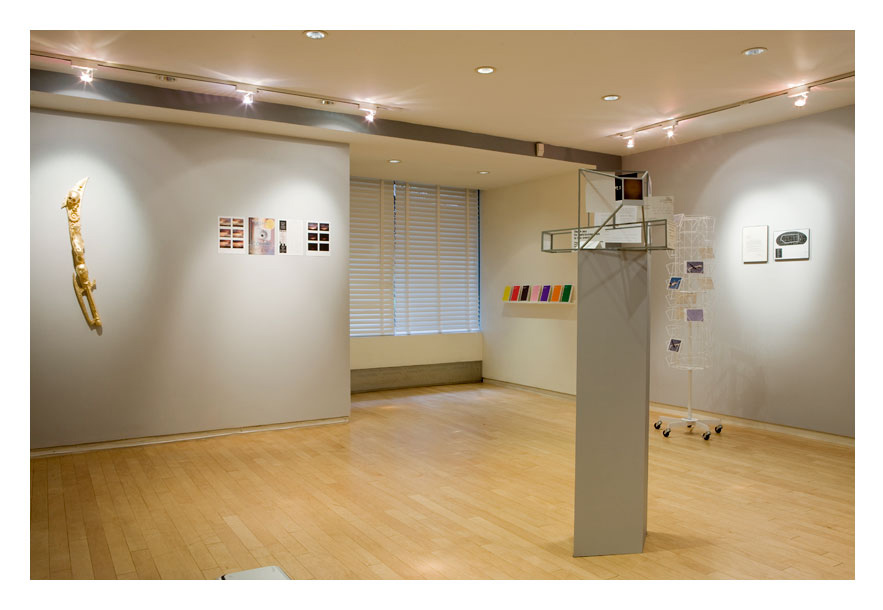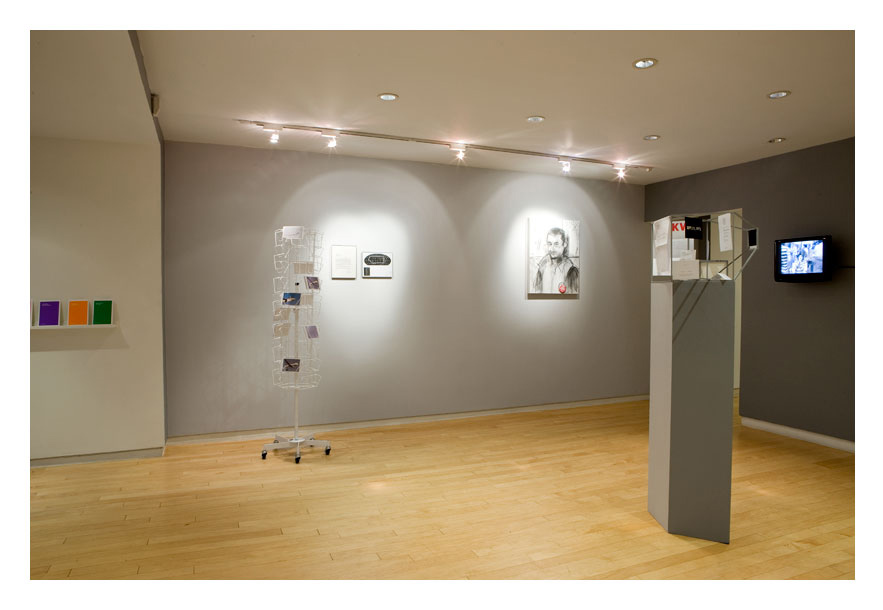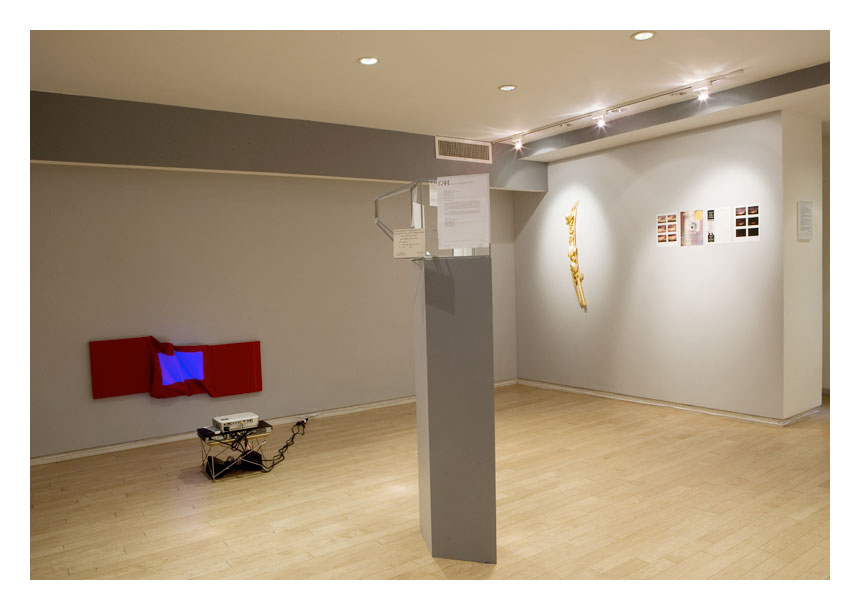Power Structure: Curated by Nicolás Guagnini
November 7 - December 13, 2008
Luis Camnitzer, Alejandro Cesarco, Juan Downey, Dan Graham, Sam Lewitt, John Miller, Karin Schneider, Reena Spaulings.
Andrew Roth is pleased to announce the opening of “Power Structure” by Nicolás Guagnini. For his third exhibition at Andrew Roth Gallery, Guagnini brings together a consortium of his peers — both contemporary and historically relevant artists — to illuminate his work Power Structure, “just because [he] can.”
“Power Structure” is both a one-person and a group exhibition, curated by Guagnini and including his own work: the centerpiece around which all other works are circumscribed. Power Structure consists of a skeletal wood construction acting as a tenuous support for assorted (13) cultural ephemera collected by or sent to Guagnini: a business card; letters addressed to Guagnini from museums, galleries, art magazines, or university administrations; invitations; a Polaroid.
The ephemera on display traces the power structure to which Guagnini — as an artist, writer, and professor — subscribes and is subjected to. Since he identifies with the invisible core of this legitimization and the critical importance of relationships between artists, the works in the exhibition by Guagnini’s primary circle of affiliates traces a set of references to larger power structures, as well as a peculiar tribal heterogeneity.
Thus, Dan Graham’s unrealized magazine proposal from 1969 echoes the ongoing dialogue between Guagnini, Graham, and Miller, who have published articles in various magazines voicing each other’s support as well as presenting new analysis of their productions. Luis Camnitzer’s 1971 interpellation of an observatory for the discovery of new constellations plays against Reena Spaulings’s postcards of unmanned surveillance and bombing drones, presented in a Duchampian display rack. Also in 1971, Juan Downey — recent subject of an essay by Guagnini — together with his cohort Gordon Matta-Clark, administered “fresh air” to Wall Street passersby, as featured in a video documenting the performance.
Karin Schneider’s image-projection on a painting reconfigures a live performance of Petit Mal’s prescient song “Crisis in the Credit System.” John Miller supplies a gold-leafed plastic sword, decorated with skulls and other paraphernalia, that bespeak of the commodity fetish and its deadly implications, ever present in the work of Sam Lewitt, a former student and now a colleague. And lastly, Alejandro Cesarco, himself the subject of a magazine article by Guagnini published concurrently with this exhibition, supplies a single, dry, and classic conceptualist sentence (here re-contextualized as a personal statement about the artist) coupled with a series of publications of artists in dialogue that map his unique set of interests and relationships.
Among the many vectors presented in this configuration of artists, the most discernable is a rereading of the legacy of conceptual art. In turn, each share in the methods they utilize to disseminate their ideas: the public space of the magazine, video art, and the cultural conditions of production of several generations of South American artists living and working in New York City.




